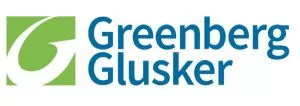- within Law Department Performance, Intellectual Property and Insolvency/Bankruptcy/Re-Structuring topic(s)
- with Senior Company Executives and HR
- with readers working within the Environment & Waste Management industries
As the adage goes, “Don't do business with relatives.” If a taxpayer enters into a Section 1031 tax-deferred real property exchange (an “Exchange”) with a relative or with a “related person” the adage can prove costly.
Some years ago, Congress was concerned about the following type of Exchange. Assume that Daughter owns an apartment building with a fair market of $5 million and an adjusted basis of $500,000. Assume further that Dad owns an office building with a fair market value of $5,000,000 an adjusted basis of $4,500,000. Neither property is encumbered by a deed of trust.
Daughter engages Genesis Bank Exchange to act as her Qualified Intermediary and sells her apartment building to an unrelated person. Daughter completes her Exchange by acquiring the office building from Dad, who does not do an Exchange. It would appear that Daughter has successfully completed her Exchange and Dad has $5,000,000 in cash but only owes taxes on $500,000 of gain. But for IRC Section 1031(f), this would be a neat way of enriching the family at a minimum cost.
Let's lift the hood and examine this transaction through the prism of IRC Section 1031 (f). The first point is that you need to examine Section 1031(f) whenever the Replacement Property, as in the above example, is acquired from a related party. Even though a Section 1031 qualified intermediary is not considered the agent of the taxpayer, Section 1031(f) will apply, notwithstanding the use of a qualified intermediary, if the transaction or series of transactions are structured to avoid the purposes of IRC Section 1031(f). See IRC Section 1031(f)(4).
The second point is that you need to determine who is a “related person.” Summarizing who is a related party is well beyond the scope of this article. At a high level beware of dealing with relatives (although a brother-in-law whose interest is not held as community property is not related) and controlled by, or under common control with, the taxpayer engaged in the Exchange.
If Dad also enters into an Exchange and acquires his Replacement Property from an unrelated party, and if Daughter and Dad hold each of their Replacement Properties for 2 years, all other things being equal, Daughter and Dad would each be eligible for tax-deferral under IRC Section 1031. However, if Dad does enter into an Exchange and instead “cashes out” of his investment in the office building, Daughter's transaction will not be eligible for deferral under IRC Section 1031. Rather, Daughter will be treated as having (i) sold the apartment building in a fully taxable sale and (ii) purchased the office building in a separate transaction.
Which brings us to the S.W.S. Realty, LLC (“SWS”). This case was decided by the California Office of Tax Appeals (“OTA”) on January 25, 2024. The OTA is an administrative tribunal that hears disputes between taxpayers and the Franchise Tax Board (“FTB”). For the most part, the Administrative Law Judges who hear OTA cases are former FTB employees. The case is marked “Non-Precedential,” which means that it cannot be cited in other cases.
The issue before the OTA was whether SWS's disposition of real property located on Slauson Avenue (“Slauson”) qualified for non-recognition treatment under IRC Section 1031.
Here is a brief summary of the facts:
- SWS owned Slauson and, utilizing a Section 1031 qualified intermediary, sold Slauson to an unrelated third party for $13,000,000.
- TWS owned real property located at North Brand Boulevard (“Brand”).
- SWS timely designated Brand as Replacement Property and acquired Brand for $14,000,000 using the same qualified intermediary.
- Brand was encumbered by a loan of approximately $9,000,000 and a portion of the Slauson sales proceeds were used to repay the loan. The maturity date of the loan had been extended and it is clear from the facts that TWS was under pressure to repay the loan.
- At the time of the sale, TWS' adjusted basis in Brand was in excess of $19,000,000.
- SWS reported recognized gain on the transaction of approximately $2,500,000.
- TWS realized a loss of approximately $5,000,000.
- SWS and TWS are “related persons” for purposes of Section 1031(f). Under the applicable rules, the same persons owned more than 50% of the profits or capital of each of SWS and TWS, making SWS and TWS related for purposes of Section 1031(f),
The OTA stated that in determining whether a transaction has been structured to avoid the purposes of Section 1031(f), federal courts have compared the actual tax consequences of the transaction to the taxpayer and the related party in the aggregate, to those which would have resulted from a direct sale of the relinquished property by the taxpayer. Had SWS sold Slauson in a direct sale, SWS would have recognized over $11,000,000 in gain. By engaging in the Exchange, SWS limited its gain recognition to $2,500,000, thereby deferring $8,500,000 of gain.
The taxpayer could still get out from under Section 1031(f) if the taxpayer could prove that the transaction did not have as its principal purpose, the avoidance of federal income tax. See Section 1031(f)(4). SWS advanced this argument, but to no avail.
It is difficult to see how SWS could have prevailed in arguing that the exchange transaction did not have tax avoidance as its principal purpose. The OTA emphasized that for purposes of Section 1031(f)(4), the only relevant inquiry is whether the exchange provided significant tax benefits as compared to a direct sale of Slauson. SWS deferred approximately $8,500,000 of gain and TWS realized a built-in loss of over $5,000,000. Thus, the OTA would not agree that the tax avoidance could be overcome by the use of a qualified intermediary.
The taxpayer argued that the $5,000,000 of built-in gain could have been realized as a result of a foreclosure. The OTA countered by stating that the proceeds from the sale of Slauson could have been used to repay the Brand loan without the need to do an exchange and with no other benefit resulting from SWS acquiring Brand.
Often when I read an OTA case I read between the lines and conclude that the OTA has chosen facts that favor its pro-FTB disposition. However, in this case, SWS never stood a chance. SWS is a cautionary tale for all taxpayers engaging in related party exchanges.
This article was originally published in Genesis Bank's "Insights" newsletter.
The content of this article is intended to provide a general guide to the subject matter. Specialist advice should be sought about your specific circumstances.


